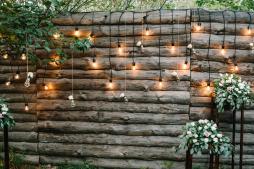How Different Light Colors Affect Mood and Match Your Theme Effectively
Lighting plays a critical role in shaping the atmosphere of any environment, whether it’s a cozy home, an inviting restaurant, or a vibrant office space. The colors of light can significantly influence our mood and perception of a theme. In this article, we’ll explore how different light colors can affect your mood and help you choose lighting that effectively matches your desired theme.
Understanding Color Temperature
Color temperature is measured in Kelvin (K) and indicates whether a light appears warm (yellowish) or cool (bluish). Warm lights (2700K to 3000K) create a cozy, inviting atmosphere that’s perfect for relaxation areas like living rooms or restaurants. On the other hand, cool lights (4000K to 5000K) evoke feelings of energy and alertness, making them suitable for workspaces or kitchens where productivity is key.
The Impact of Warm Lighting
Warm lighting tends to enhance feelings of comfort and intimacy. It’s ideal for settings such as bedrooms or dining areas where you want guests to feel relaxed and at ease. Using warm light fixtures like soft yellow bulbs can encourage conversation and create a welcoming environment that aligns beautifully with themes centered on togetherness or nostalgia.
Exploring Cool Lighting Options
Cool lighting solutions are often associated with cleanliness and focus. This type of lighting works wonders in modern office spaces or minimalist designs that emphasize function over form. By incorporating cool white LEDs into your decor, you can reinforce themes related to innovation and efficiency while keeping the space energized for productivity.
Accent Lighting: Highlighting Your Theme
Accent lighting allows you to draw attention to specific features within your space—be it artwork, architectural details, or decorative elements—thus enhancing your overall theme. Spotlights with adjustable color filters enable you to switch up hues based on the occasion; for instance, using blue tones for corporate events versus warm amber during intimate gatherings helps convey different moods effectively.
Layering Lights for Depth
To create an engaging atmosphere that resonates with your chosen theme, consider layering different types of lighting: ambient (general), task (functional), and accent (decorative). Combining these layers allows you not only to adjust brightness levels but also manipulate colors throughout the space—making it an adaptable canvas that complements various occasions without losing thematic coherence.
In conclusion, choosing the right lighting color is essential in creating an environment that reflects your desired mood while matching your overall theme effectively. Whether aiming for warmth with soft yellows or invigorating energy from cooler shades, understanding how these elements interact will empower you in designing spaces that resonate emotionally with their occupants.
This text was generated using a large language model, and select text has been reviewed and moderated for purposes such as readability.











